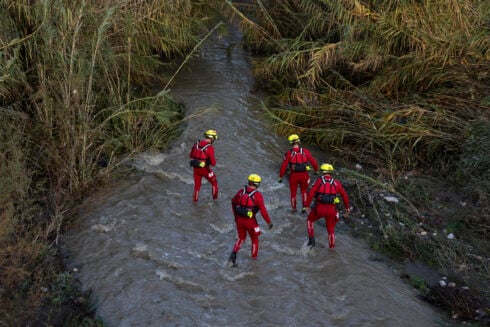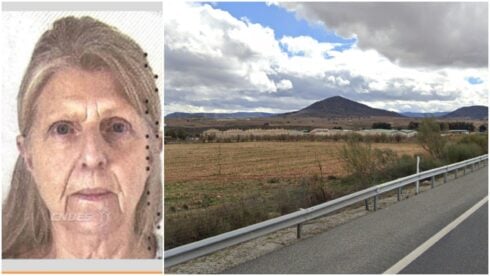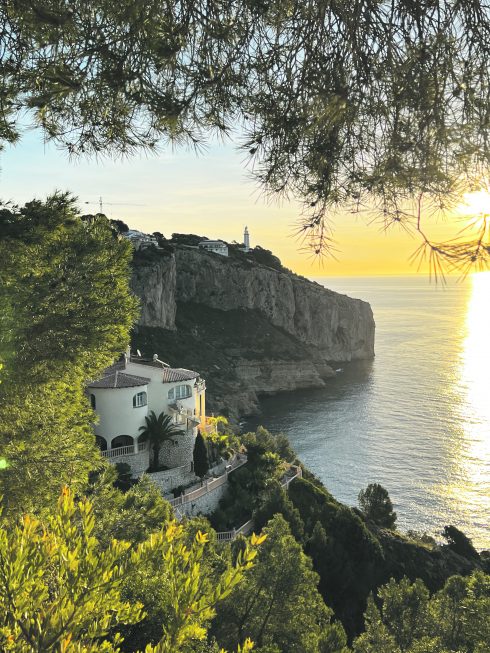WITH summertime officially upon us, and temperatures rising, many people dwelling on the south side of the Sierra Nevada are visiting the Costa Tropical of Granada, an hour’s drive away.
Lying below the Sierra de Contraviesa, within easy access of the Alpujarra, the old N340 coastal road runs below the newer and straighter A-7 motorway. It winds past several unspoilt seaside towns that belong to the Costa Tropical.
As you drive along the coastline, you can enjoy endless panoramic views of the glistening Mediterranean Sea.
You’ll pass several fishing towns and villages en route, starting with Castell del Ferro to the west and La Rábita to the east. This is the perfect destination for a day trip or weekend away.
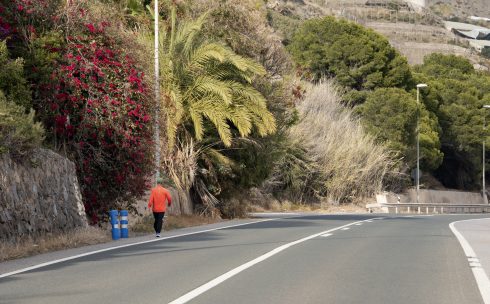
Going round the bend?
Although motorists who don’t like mountain passes can reach this part of the Costa Tropical via the fast A7 motorway, from either Motril or Adra direction, the scenic option is to drive directly over the Sierra de Contraviesa.
You could stop at the Haza del Lino bodega and restaurant for a refreshment or ‘racion’ when you are passing the ridge of the range, just above Polopos.
Various mountain roads wind down to the beaches, including the GR-5206 through Rubite to Castell del Ferro (this is extremely bendy), the GR-6204 through Polopos to Castillo de Baños; and the A345 through Albunol to La Rábita. There’s also a minor route from Sorvilán to the tiny fishing village of Los Yesos.
You can plan an exciting round trip, taking in various routes and viewpoints. Don’t forget the camera (or smartphone) to record the experience.
When you arrive at the seaside there’s a pleasant surprise: that the towns here aren’t over-developed. Usually, you can find a (free) parking place and walk directly on to the beach.

Castell del Ferro
With 4,500 inhabitants, Castell del Ferro is the largest seaside town that can be reached via the Contraviesa – from the route that starts just past the Tablones of Órgiva.
Part of the municipality of Gualchos, Castell del Ferro has many amenities, including a beach with several coves, a pretty campsite (Huerto Romero), motorhome area, hotel, numerous restaurants and bars, shops, supermarkets, and a mobile phone store.
The town has a long history. The place name derives from ‘Ferruch’, which dates to the conquest of Granada. Debate continues as to whether it’s an ancient term for ‘iron’ or means something else.
During the 18th century, many Catalans settled in Castell del Ferro, to catch the wealth of local fish. Today, tourism is the town’s main industry.
You can choose from three beaches – Playa Cambriles-Lujar, Playa de Castell del Ferro and Playa del Sotillo, where the campsite is based. Nearby Playa Lances offers a nudist beach, for the brave at heart.


Castillo de Baños
Just along from Castell del Ferro, the town of Castillo de Baños is part of Polopos municipality. The town is separated into two ‘barrios’ – ‘abajo’ and ‘alto’ – with the N340 running through the middle.
The main landmark is the Hornabeque Fortress. This takes a horseshoe shape and was originally built in the 16th century, during the reign of King Philip II. It was later reconstructed in the 18th century and stands intact today.
The town has a large campsite, located just off the seafront. This has a restaurant and swimming pool. However, it was closed during our March visit, although plenty of the local bars were open.
Unfortunately, the beaches at Castillo de Baños are mainly formed of huge rocks jutting into the sea, so it’s not the ideal destination for sunbathing.
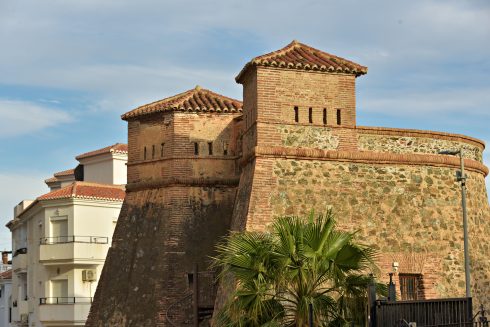

La Mamola
Another town belonging to the municipality of Polopos, and where its ‘ayuntamiento’ is based, La Mamola is an unspoilt fishing village that is growing in popularity. Interestingly, the locals don’t use its real name, choosing to call it ‘el pueblecillo’.
Presided over by an ancient watchtower, the Torre del Cautor, La Mamola offers various restaurants, ‘chirungitos’ and two supermarkets. It has a long and spacious beach, equipped with football nets for the active, and is popular for fishing.
Fancy a hike? There’s a dedicated pedestrian seafront walkway, leading to nearby Los Yesos to the east, or Castillo del Banos to the west.
If you want to stay overnight, Hostal Ontiente is an economical option. Situated just back from the beachfront, this has an adjoining bar/restaurant and is ideal for solo travellers and couples alike.
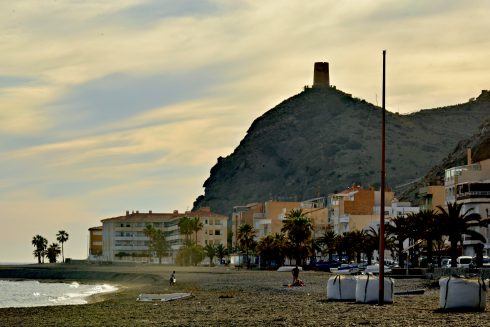
Los Yesos
As stone’s throw from La Mamola, Los Yesos is a tiny fishing village with a few properties nestling along a quiet stretch of beach. OK, this might not be the ideal destination for lively teenagers, or adults wanting to visit lively bars.

Melicina
Part of Sorvilán municipality, Melicina is a small and undeveloped fishing village, where you’ll find a tranquil and cute little beach – and not much else, although it does have a breastfeeding salon for mums. Great if you want a quiet interlude.
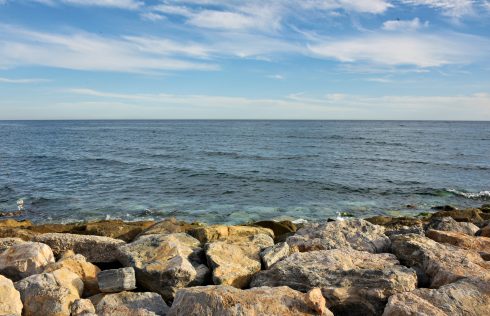
La Rábita
La Rábita belongs to the municipality of Albuñol and is situated near a big ‘rambla’ (dry riverbed). It is one of the larger towns on this stretch of the Costa Tropical.
This is a popular beach destination for residents of La Alpujarra, who can drive over the hills to relax on Playa Rábita. There are plenty of amenities, although the hotel is closed until summer.
The name ‘Rábita’ comes from a ‘ribat’ – or fortress-monastery – dating to the Nasrid kingdom of Granada: it was a strategic coastal defense. In the 18th century, the existing watchtowers of La Rábita and the nearby Punta Negra and Huarea were built.
The Torre Vigía De La Rábita (its full name) was, until recently, used as headquarters of the Guardia Civil.
During the mid-19th century, La Rábita was one of La Alpujarra’s most important ports, importing rice, cod, grains, wood, and coal, and exporting wine, raisins, almonds, figs, beans, and chestnuts. At that time, the main economy was fishing, with a variety of vessels dedicated to the trade.
In 1973, La Rábita suffered extensive flooding. Afterwards, the town was repaired and subsequently expanded. The economy today is based on agriculture, fishing, and the service industry.
The patron saint is Virgen del Mar – the sea virgin.

THINGS TO DO ON THE COSTA
- Motorbiking – there’s a moto club in El Pozuelo, near La Rábita.
- Fishing – remember to obtain a permit from your local agricultural office to avoid a ‘multa’.
- Enjoy fish that has already been caught at the many ‘chirungitos’ and seafront restaurants.
- Hiking – seafront pedestrian walkways exist between several of the fishing villages.
- Swimming – if you’re with your kids, bear in mind that, during summer, some of the more popular beaches have lifeguards.
- Relaxing – just sunbathe!
READ MORE
- WINE COUNTRY: La Alpujarra and Contraviesa of Spain’s Granada have produced wine for 2,000 years – and it’s still a corking success
- WINE CENTRAL: Bodega Cuatro Vientos, an unmissable visitor experience in the Sierra de Contraviesa
- The unspolit little sister to the Sierra Nevada – the Sierra de Contraviesa in Spain’s Granada
Click here to read more Granada News from The Olive Press.


